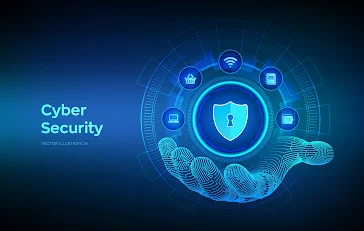Introduction
In today’s interconnected world, cybersecurity has become a critical concern for individuals, businesses, and governments alike. As digital technology evolves, so do the threats associated with it. Cyberattacks can have significant global implications, affecting economies, international relations, and even national security. This blog explores the far-reaching impact of cybersecurity on the global stage, shedding light on how various sectors are affected and what the future might hold.
The Economic Impacts of Cybersecurity
One of the most immediate effects of cybersecurity breaches is economic loss. A successful cyberattack can result in the theft of valuable data, intellectual property, and financial information. For businesses, this can mean millions in revenue loss, as well as reputational damage that can take years to recover from.
- Cost of Data Breaches: According to IBM’s 2023 Cost of a Data Breach report, the average cost of a data breach has risen to $4.45 million, with businesses in highly digitized sectors like finance and healthcare being the most affected.
- Global Financial Markets: Cyberattacks also have the potential to disrupt global financial markets. In 2020, the New Zealand Stock Exchange was temporarily shut down due to a cyberattack, showing the vulnerability of even the most established institutions.
- Small Businesses Are Targets: While large corporations often make headlines, small businesses are also at risk. With fewer resources to invest in robust cybersecurity measures, they are often easy targets for hackers, which can lead to devastating financial consequences.
Cybersecurity and National Security
Cybersecurity is no longer just a concern for corporations; it has become a critical element of national security. Governments worldwide are facing an increasing number of cyber threats, both from criminal organizations and state-sponsored actors.
- Espionage and Hacking: Cyber espionage is a growing concern, with nation-states targeting sensitive governmental and military data. In recent years, major powers like the United States, China, and Russia have been involved in high-profile hacking incidents that have heightened global tensions.
- Cyber Warfare: The rise of cyber warfare is another alarming trend. In a conflict, cyberattacks can disable essential infrastructure, disrupt communication systems, and paralyze a country’s military capabilities without a single bullet being fired.
- Global Collaboration on Cybersecurity: To address these growing threats, international collaboration is becoming increasingly important. Organizations like NATO and the United Nations are working to establish global cybersecurity standards and strategies for mitigating the risks posed by cyberattacks.
The Role of International Relations
The implications of cybersecurity extend beyond economics and security; they also play a significant role in shaping international relations.
- Cyber Diplomacy: Countries are now engaging in cyber diplomacy, negotiating treaties and agreements to prevent cyberattacks and promote digital safety. The ongoing discussions about internet governance, digital sovereignty, and data privacy highlight how intertwined cybersecurity has become with global diplomacy.
- Trade and Cybersecurity: The rise in cyber threats has also led to new trade barriers. Countries are becoming increasingly protective of their digital infrastructure and data, creating stricter regulations around international trade, particularly in technology sectors.
- Trust Between Nations: A lack of cybersecurity trust between nations can strain international relationships. For example, accusations of election interference through cyber means have soured relations between countries like the U.S. and Russia.
The Future of Global Cybersecurity
As technology continues to advance, so will the challenges associated with cybersecurity. With the rise of artificial intelligence (AI), the Internet of Things (IoT), and 5G technology, the attack surface is expanding, offering cybercriminals more opportunities to exploit vulnerabilities.
- Artificial Intelligence and Cybersecurity: While AI offers solutions for automating security defenses, it can also be used by hackers to develop more sophisticated attacks. The global community will need to stay ahead of this curve to safeguard against these new threats.
- The Need for Cybersecurity Skills: The growing threat landscape also highlights the need for skilled cybersecurity professionals. Globally, there is a shortage of cybersecurity experts, and addressing this gap will be critical in the fight against cybercrime.
Conclusion
Cybersecurity is a global issue that affects every aspect of modern life, from the economy and national security to international relations and technological progress. As cyber threats become more complex and widespread, the world will need to come together to build stronger defenses and collaborate on creating a safer digital future. The global implications of cybersecurity are vast, and addressing them requires collective effort from governments, businesses, and individuals alike.










